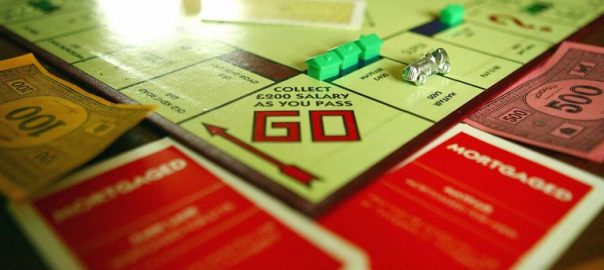Do you think it useful to know what the economy is likely to be like over the next 6 months, year or more? Business spends a fortune on economists to provide these insights to help with their forward planning – so the answer should be yes.
Strategic thinking requires forward vision. An understanding of business cycles is an important element for predicting future scenarios. So where are we? What can we expect?
Predictions for improved economic circumstances are positive for 2017 and 2018, but the pessimists are ever-present, and it seems negative news is more pervasive than good news. The world is confused and concerned about Trumpenomics and the fracturing of the established political status quo around the world. We can expect more volatility and political unrest as unequal income distribution and accumulation of wealth give rise to more dissent.
There do exist some simple indicators of economic activity that are not widely considered by economists – despite (or possibly because of) their ease of understanding and reliability.
The first of these is the stock market itself. It predicts economic activity six months to a year in advance. The recent “Trump Rally” is based on expectations of massive economic pump-priming in the USA – the world’s largest economy and one that Australia follows. Why the rally? – Lower company tax rates, repatriation of international corporate capital back into the USA, massive infrastructure spending and expanded defence spending. Talk about a stimulus package – this could lead top one of the biggest booms of all time!
But there is more to forward looking than just following the news. Have you ever notice how the world seems to ebb and flow. Even your own energy patterns do this. It is part of the natural order of things, and relates equally to the world of business and finance.
I remember my History professor at University saying that we study history not just to learn from it, but because it repeats – never precisely, but in kind. If economic cycles repeat, an understanding of them provides valuable insights into longer-term economic prospects.
Kondratiev Waves
Many cycle or wave theories have been proposed over the last century – including the long form Kondratiev wave (45 to 60 years) based on the impact of new innovations, and supported by Kuznets’ 17 year harmonic cycle within the Kondratiev wave, attributed largely on credit creation. (The Austrian School economists also suggest business cycles are based on money supply and credit creation.)
Note that modern economists, despite a fair degree of empirical evidence, do not generally support cycle and wave theory.
“Recent research employing spectral analysis has confirmed the presence of Kondratiev waves in world GDP dynamics at an acceptable level of statistical significance…(with) shorter business cycles detected, dating the Kuznets to about 17 years, and calling it the third sub-harmonic of the Kondratiev, meaning there are three Kuznets cycles per Kondratiev wave.”[i]
It is generally agreed that the current Kondratiev wave commenced in the early 1990s based on information technology, which suggests that the economic impact of these innovations will peak in the 2020s.
Real Estate Cycles
There is considerable research to support the hypothesis of an 18 to 20 year real estate cycle (Homer Hoyt, Fred Harrison and Phillip Anderson), which also correlates to the cyclical behaviour the legendary Wall St trader WD Gann used for his famous predictions in the first half of the century. This also correlate roughly with credit creation and interest rate cycles.
These theorists suggest the real estate cycle will peak around 2025 – 2026.
Commodity Cycles
Commodity cycles are shorter in duration and pre-empt general economic conditions. The last cyclical downturn from 2008 on has now passed with all commodities experiencing an upsurge in demand and prices during 2016. This presages continued economic growth over the coming years.
So what does all this mean?
A continued commodities bull market supported by economic pump-priming in the USA, continued growth in China and India coupled with credit creation and the growth impetus of digital innovation. This translates into boom times, albeit with volatility, until the middle of the next decade. Early indications suggest this could be one of the biggest booms of all times – possibly followed by one of the biggest busts of all time.
But most of the wealth created will flow to the elite and less to the poorer segments of our society. This is likely to presage increasing levels of social unrest and political uncertainty. The political landscape will continue to fracture under pressure from the disaffected mainstream, with effective government becoming more difficult.
The decline of the middle classes which began in the 1970s will become more extreme, with disparity between the wealthy elite and the poor becoming more pronounced and providing impetus for massive social change. Brexit, Trump and Hanson are indicators of this growing dissaffection and pressure for change. What form of revolution could we see?
Cycles and waves are long term signposts – not precision instruments. But they all suggest the potential for one of the biggest booms and busts in history. Will the 100 year cycle Gann refers to come to fruition? – with a stock market collapse to mirror the 1929 crash and subsequent extended 1930’s deep depression?
I’ll certainly be looking at going to cash around the middle of the next decade, to capture the profits I expect to accumulate from several years of growth in mining, financial and real estate stocks as well as from the new innovators.
David Shelton
[i] Korotayev, Andrey V., & Tsirel, Sergey V. A Spectral Analysis of World GDP Dynamics: Kondratieff Waves, Kuznets Swings, Juglar and Kitchin Cycles in Global Economic Development, and the 2008–2009 Economic Crisis.

